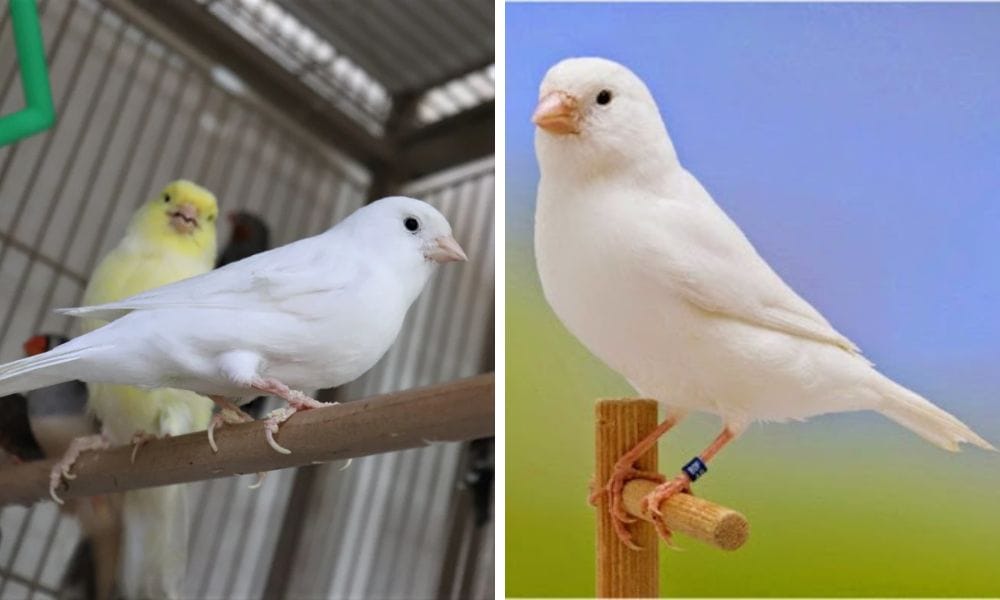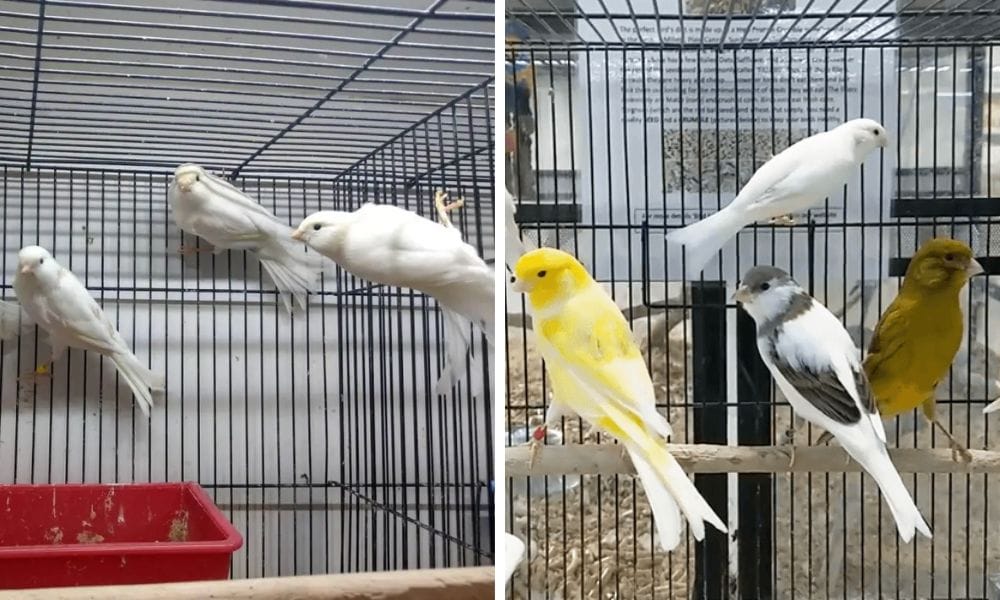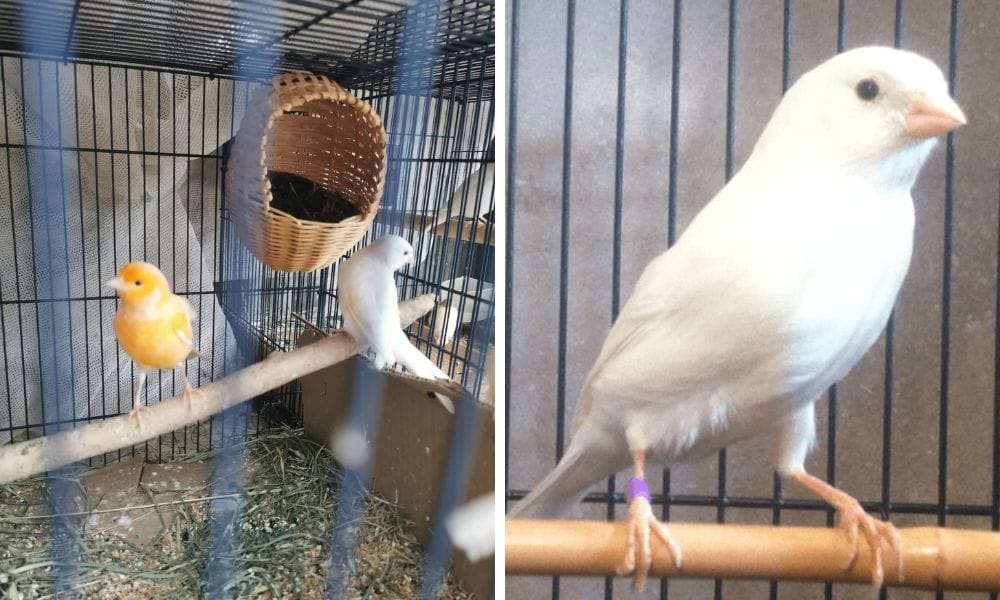The Enchanting World of the White Canary Bird
Get ready for an adventure of a lifetime as I take you on a journey to explore the white canary bird and the enchanting world it resides in!

Key Takeaways:
- Understand the genetic intricacies behind the white canary bird's pure and captivating color.
- Discover the differences between dominant and recessive white canaries and their breeding patterns.
- Learn about the care requirements and the importance of vitamin supplements for maintaining the health of white canaries.
The white canary bird is a fascinating creature, a small songbird that has captured the hearts of bird enthusiasts and pet owners alike. With its pure white feathers and melodious song, it's no wonder that this bird has become a popular choice for those looking to add a touch of elegance to their aviaries. But what exactly is a white canary, and how does it differ from its colorful counterparts?
The Genetics of White Canaries: Dominant vs. Recessive
The white canary bird is a member of the finch family originating from the Macaronesian Islands, including the Canary Islands. The term "white canary" encompasses both dominant white canaries and recessive white canaries, each with its unique genetic makeup. The dominant white gene is an incomplete dominant, meaning that only one gene is needed to produce the white coloration. These birds often exhibit slight shading or may have colored eyes, as opposed to the pink eyes typically seen in albinos.
On the other hand, recessive white canaries carry the recessive white gene, which masks any other color the bird might have. This gene must be present in both parents to produce a recessive white offspring. These birds are often pure white, with no shading, and may also have pink eyes, although they are not true albinos. The recessive white gene makes breeding for this color more challenging, as both parents must carry the gene to have a chance of producing white offspring.
Canary Colors and Variations
Canary colors range from the wild canary's green and brown shades to the vibrant yellow canary, red factor canaries, and even blue and orange varieties. Color canaries are bred specifically for their plumage, and the white canary is no exception. Variegated birds, which display patches of color against a white background, are also popular among breeders. These variegated unleashes a kaleidoscope of colors, with single genes determining the melanin variety in the feathers.
The recessive white mutation is particularly interesting because it can hide other colors. For example, a bird that appears pure white may be a yellow carrier, meaning it has the genetic material for yellow plumage, but the recessive white gene masks it. This can lead to surprises when breeding, as pairing two white birds might produce offspring of different colors if they carry genes for other shades.

Caring for White Canaries
White canaries, like all color canaries, require specific care to maintain their health and vibrant plumage. Vitamin supplements are particularly important for white birds, as they can help prevent health issues and enhance the bird's overall condition. A balanced diet, rich in nutrients, is essential for these birds, and many owners opt to provide a mix of seeds, fruits, vegetables, and specially formulated canary food.
In addition to a nutritious diet, white canaries need a clean and spacious environment. Their cages should be kept in a well-lit area but out of direct sunlight, which can cause discomfort and overheating. Regular cage cleaning is crucial to prevent the spread of disease and to keep the canaries' white feathers from becoming soiled.

The Intricacies of Color Breeding in Canaries
When it comes to breeding for that perfect hue, the dominant white canary often takes center stage. Unlike their recessive white counterparts, these birds carry a powerful genetic punch that ensures their snowy plumage is passed down more consistently. It's a fascinating dance of genetics where breeders meticulously pair birds to achieve that pristine white bird look. But it's not just about the feathers; breeders also pay close attention to the color of the legs and skin, aiming for a clear canary that meets the highest standards of color bred enthusiasts.
In the world of color breeding, yellow carriers play a crucial role. These are the birds that may not display the desired white coloration themselves but carry the genes that can produce white offspring when paired correctly. It's a strategic game of mix and match, where breeders often divide their aviaries into sections for each color variety. This meticulous approach ensures that the clear birds are not accidentally paired with, say, black canaries, which could result in mixed or dark offspring, moving away from the sought-after pure white lineage.
The Role of Gender in Canary Breeding
When breeding canaries, the gender of the birds is a critical factor to consider. Females, in particular, are often the focus as they are the ones to carry and hatch the eggs. However, it's not just about the reproductive role; the color and genetics of the females are equally important. For instance, a dominant white canary female paired with a recessive white male may yield different results compared to the reverse pairing. Breeders must be knowledgeable about these dynamics to effectively produce the desired white offspring.
Moreover, the division of breeding pairs is sometimes based on gender, with females of particular color traits being paired with males carrying complementary or desired traits. This is especially true when breeders aim for clear birds with no hint of dark or unwanted coloration. The legs and skin color can also be influenced by gender-specific genetic traits, making the selection of the right pair a complex but intriguing aspect of canary breeding. By understanding these nuances, breeders can enhance their chances of producing healthy, vibrant, and color-true canaries.
Breeding White Canaries
Breeding white canaries can be a rewarding experience, but it requires knowledge of genetics and careful selection of breeding pairs. When breeding dominant white canaries, only one parent needs to carry the dominant white gene to produce clear canaries. However, breeding recessive whites is more complex, as both parents must carry the recessive white gene to have a chance of producing pure white offspring.
It's also important to note that breeding two recessive white canaries does not guarantee all-white offspring. The genetic material from both parents can result in a variety of colors, depending on what other color genes the birds carry. Breeders often keep detailed records of their birds' genetic backgrounds to predict the colors of future generations.

The Importance of Genetic Diversity
While breeding for specific colors like white is a common practice, it's essential to maintain genetic diversity within the canary population. Focusing solely on color can lead to inbreeding, which may cause health problems and reduce the birds' overall vitality. Responsible breeders will often introduce new genetic material into their breeding programs by pairing birds from different lines or with different color backgrounds.
This practice not only helps to preserve the health of the canary population but also creates the potential for new color variations. With each pairing, there's a chance of producing offspring with a new color combination, adding to the already rich tapestry of canary colors.
The Allure of the White Canary
The white canary bird, with its serene beauty and charming song, continues to be a favorite among bird lovers. Its striking appearance, combined with the complexity of its genetics, makes it a fascinating subject for both casual owners and serious breeders. Whether admired in an aviary or singing from a cage in a living room, the white canary is a testament to the diversity and wonder of the avian world.
Summary
The white canary bird is a captivating species, known for its pure white plumage and delightful song. With a complex genetic background, these birds come in two main types: dominant white canaries and recessive white canaries. Caring for these birds requires a nutritious diet, a clean environment, and an understanding of their specific needs. Breeding white canaries can be challenging but rewarding, with the potential to produce a variety of colors due to the hidden genetic material. Maintaining genetic diversity is crucial for the health and vitality of the canary population.
FAQ Section
Q: Can two white canaries produce offspring of a different color? A: Yes, if both white canaries carry genes for other colors, their offspring may display those colors due to the recessive white gene masking the underlying pigment.
Q: Are white canaries albino? A: Not necessarily. While some white canaries may have pink eyes, which is a characteristic of albinism, many have colored eyes and slight shading, indicating they are not true albinos.
Q: Is it difficult to breed white canaries? A: Breeding white canaries, especially recessive whites, can be more challenging than breeding other colors because it requires both parents to carry the recessive white gene. However, with knowledge of genetics and careful selection of breeding pairs, it is possible to successfully breed white canaries.

